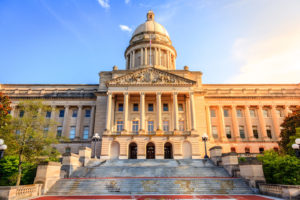Report: 30 years after landmark court ruling to increase funding, Kentucky’s public schools are worse than ever
Public school activists often blame underfunded schools for poor test scores, but a new report from Kentucky says just the opposite.
The Bluegrass Institute for Public Policy Solutions tracked…

Public school activists often blame underfunded schools for poor test scores, but a new report from Kentucky says just the opposite.
The Bluegrass Institute for Public Policy Solutions tracked school funding and NAEP test scores for a 30-year period (1992-2022) and found a steady decrease in return on taxpayer dollars.
While per-pupil funding rose 85% between 1992 and 2022 – after being adjusted for inflation – reading and math scores among 4th graders didn’t reflect the added investment. Although the test scores went up a few points, the increase was not proportional to the extra thousands of dollars added to per-pupil funding.
The same was true of 8th grade, where reading scores are worse now than they were in 1998.
The report concluded that, all else being equal, Kentucky education dollars are 36% to 53% less effective than they were in the early 1990’s.
“This data-driven analysis adds to the growing mountain of evidence that while Kentucky is spending more than ever of its budget pie on public education, it’s drifting farther than ever from its constitutional mandate of providing an efficiently effective system that serves students and taxpayers well,” said Bluegrass President Jim Waters in a press release.
“It also confirms what reformers have said for decades: more money does not automatically result in a better education.”
Some say Kentucky’s education woes can be traced back to 1989, when the state Supreme Court made a major ruling, radically changing education funding.
In the case, Rose v. Council for Better Education, public school administrators sued the state for allegedly underfunding certain districts.
The court ruled in favor of the education establishment, prompting a reimagining not only of the funding formula but of the entire public school system.
Since that ruling, Kentucky schools received huge increases in funding.
Similar concerns are present in other states, too.
School funding has risen dramatically in states such as New Hampshire, Kansas, and California.
In New York City, K-12 schools will soon spend over $40,000 per student annually – more than the average annual tuition for a private university.
Waters believes Kentucky should make meaningful reforms to the system, instead of just putting more money into a purse with holes.
“More alternatives, greater accountability and expanding education freedom are needed in order for Kentucky to meet its constitutional duty to its students and taxpayers,” he said.
And the state Legislature is currently considering bills to accomplish just that.
One measure promotes education freedom by amending an outdated section of Kentucky’s constitution, while another would allow voters to directly elect the state school board.



